Pig Husbandry
A guide to the care of kunekune pigs from The British Kunekune Pig Society
Pig Husbandry
A guide to the care of kunekune pigs from The British Kunekune Pig Society
The Kunekune pig comes from New Zealand. How they got there is a mystery as they are not indigenous to that country. They were kept by the Maoris for meat, living not in enclosures but free to scavenge around the houses. This probably explains their love of humans and excellent temperament. In 1976 things were looking desperate for the Kunes, and very few were left, but thanks to Michael Willis and John Simister buying every Kune they could find, 18 in all, the New Zealand Kunekune pig association was formed. They have done an excellent job, and there are now over 1000 pigs in New Zealand.
Kunekune pigs vary from 24″ to 30″ high and weigh between 140-220 lbs. They are covered in long hair, which can be straight, wavy or curly. There is a wide range of colours, from solid to a variety of spotty patterns. An interesting feature is they have a pair of tassels under their chin called Piri Piri. They have a medium head with either prick or semi-lop ears. Their body is best described as non-extreme, not long and lean like a commercial pig, or short and pot-bellied like the Vietnamese variety.
Kunes have a steady temperament and are extremely easy to handle. They are very gentle and ideally suit the new pig keeper who may be intimidated by larger, more boisterous pigs. Because of their small size, they do not cut the land up as much as larger pigs.
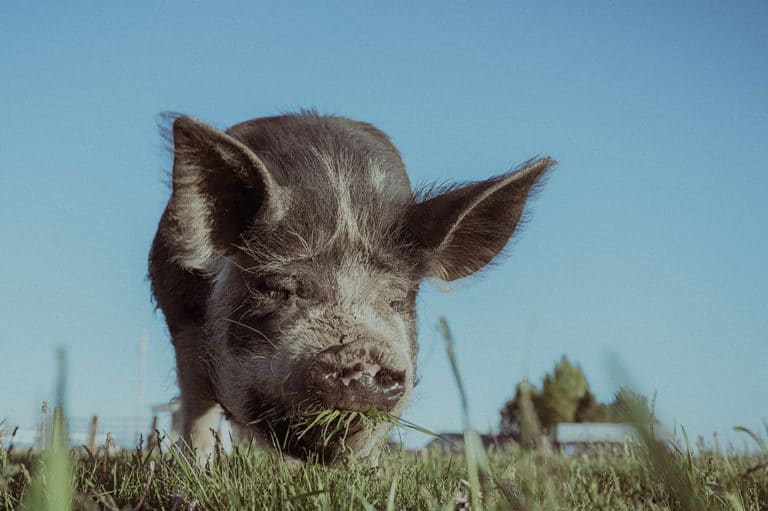
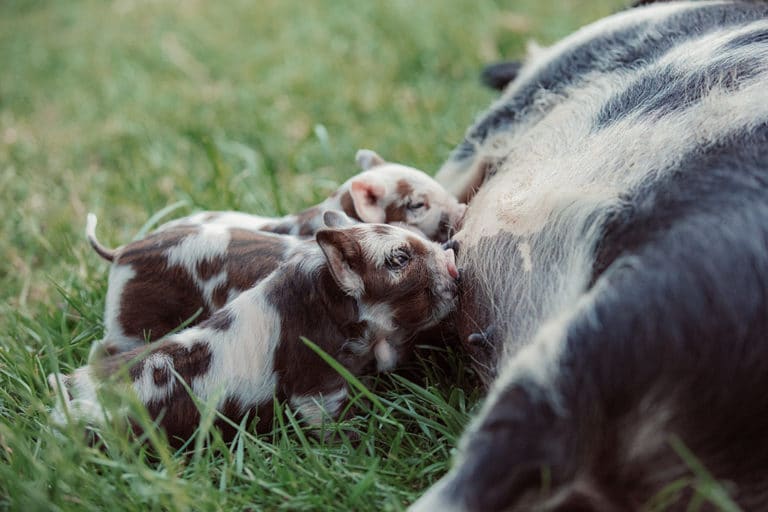
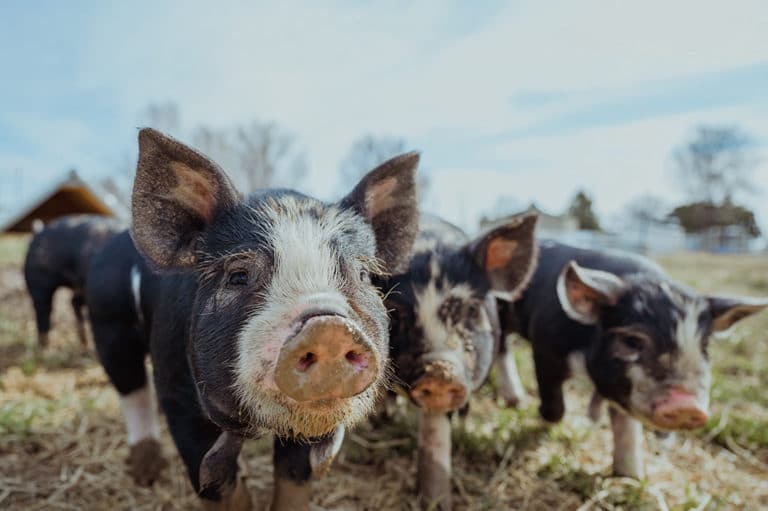
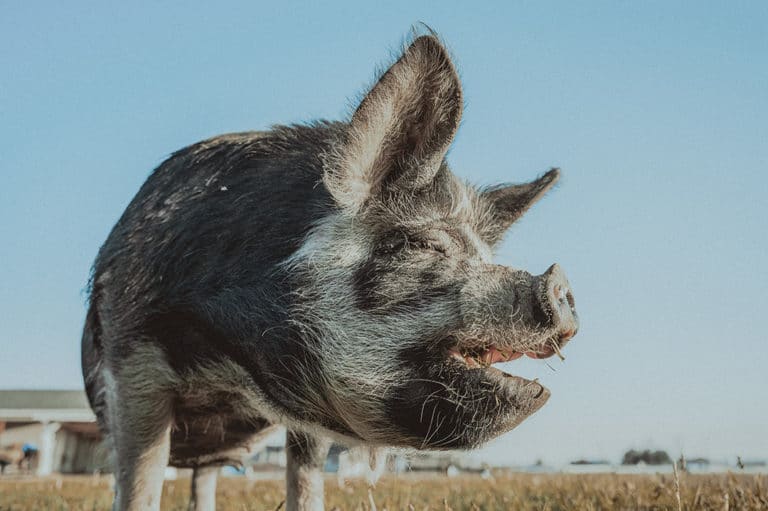
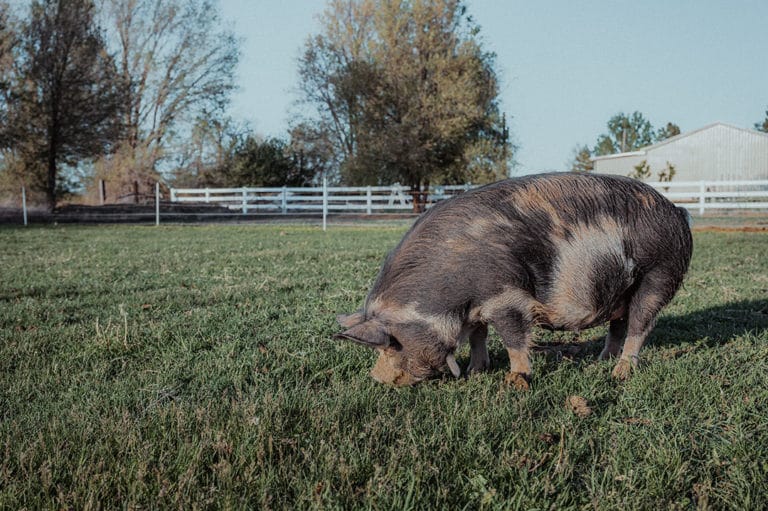
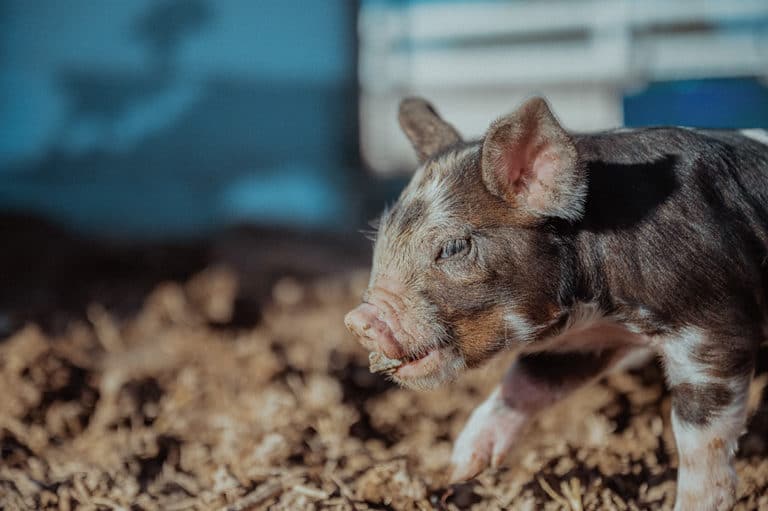
Frequently Asked Questions
Kunes thrive on a diet of grass, fresh fruit and vegetables. They differ from commercial pigs in that they do not need high levels of protein. Kunes need a maximum of 16% protein, and by preference a little less. They also need much more fibre than commercial pigs. Kunekune pigs live on grass and vegetables in summer, in autumn this can be supplemented with apples. In the winter when the grass loses its goodness 1 lb. of 16% protein sow and weaner meal mixed with 1 lb. grass pellets and water in to a hot mash can be given. This amount will vary with the condition of the pigs. There is a Pot Bellied pig food on the market that is suitable for Kunes.
Scraps of waste human food must never be fed to pet pigs. Waste food is defined by law as any meat, bones, blood, offal or other part of the carcass of any livestock or of any poultry, or product derived therefrom or hatchery waste or eggs or eggshells. Also no broken or waste foodstuffs (including table or kitchen refuse, scraps or waste) which contain or have been in contact with meat, bones, blood, offal or with any other part of the carcass of any livestock or of any poultry. Great care must be taken in this matter, for example bread from a meat sandwich must be not given to pigs because it has been in contact with meat, which is a prohibited food.
As Kunes thrive on grass it is very important that they have enough grazing for most of the year. The normal recommendation for keeping outdoor pigs is 5-6 pigs to the acre. It must be remembered that as well as eating grass they also walk on it all the time, and in wet weather the land will get cut up especially in gateways etc. you therefore get better use from your land if you can divide it up in to fairly small areas, either with pig wire or electric fencing. Your grazing will also last longer if you have some hard standing, a pen, a yard or a stable, where you can keep them if the land is very wet.
If you have a stable Kunes will do very well with a thick straw bed in the corner of it. Alternatively they will live in a sty or an Arc in the field. There are many different types of arcs including wood, plastic and corrugated iron. Kunes are hardy animals and do not really need an insulated arc. They will do well in any of the above with plenty of bedding in winter (barley or wheat straw or old hay is ideal).
Pig wire as its name suggests is a good fencing although small piglets will go through the mesh. It is a good idea to run one strand of barbed wire or a rail along the bottom of the wire to prevent them pushing it up. Electric fencing can be very effective with pigs. With electric fencing several different pens of pigs can be kept in the same field, in separate units living in arcs. Also pigs can be constantly moved so they do not graze off their own droppings.
Pigs need to wallow in summer to keep cool and prevent sunburn. You can either keep an area moist so they can turn it into mud or provide a metal wallow bath. If you do not provide a wallow they will often knock over their water in an effort to create one themselves. They only like mud when they are hot. In winter they are very unhappy to be wet and dirty as this can cause rheumatism and arthritis.
No, as discussed above, in winter they love to be warm and dry. Pigs never soil their beds if they have a choice and will always have toilet areas away from their beds that are easily cleaned.
The more boars kept the better for the breed, as there will be more genetic variability. A boar cannot be kept with the sow all the time, unless you want two litters of piglets a year so you will need additional housing and grazing. The boars are easy to handle, and great characters, but all male pigs grow tusks, and like goats and cows with horns, you have to be careful they do not catch you by mistake, if you’re worried by the tusks, they can be removed.
In this country they have between 3-14 piglets, after a gestation period of 112-116 days. Pigs in general give birth easily, and Kunes are very good mothers who do not seem to mind you handling the piglets at all.
16% protein sow and weaner meal and access to plenty of fresh grass. Food intake may double during lactation.
Kunes need vaccinating against Erysipelas. There are two initial injections, followed by one every six months. If you are going to breed, they can be vaccinated against Parvo virus, which causes embryo death and mummification. The parvo virus can be carried in boars and sows without any symptoms and vaccination is good breeding management practice.
Yes, every 4-6 months. Good land management helps prevent worm numbers building up. Any frequently used paddocks should be mucked out daily. If you use electric fencing you can move the fence frequently so they are not eating off their own droppings. Ivomectin injections treat all worm infections, but oral preparations can be used if roundworm infection is heavy.
Yes. You may need planning permission, check with your local council. Some house deeds say that you cannot keep pigs or poultry. If you have close neighbours it is much better to talk to them before you get a pig than to fall out with them afterwards, or even to have to get rid of the pig. Pigs can be very noisy at times.
You need to register with your local branch of DEFRA, who will give you a holding number.
To move any pig from one premise to another you require a movement licence. Failure to do this will result in a very heavy fine. You must also keep a book with all pig movements listed in it. Another book listing medications given must be kept if you are going to use pigs for meat. To get a certificate to exercise your pet you must: a) specify a route that you will be using b) keep your pet on a lead at all times when exercising or moving it; c) there must be no contact with any other pig; d) your pet must not have been fed any waste food at any time; and e) you must not exercise your pet on agricultural land. A certificate, when authorized, will last 12 months, after which it must be renewed. A condition of the certificate is that the owner must carry it whilst the pet is being exercised and produce it on demand to a police constable, inspector or other officer of the Ministry of Agriculture.
Yes. If reared outdoors on grass they will need to be approximately 9-12 months old before they are ready for slaughter.
Cold weather advice – In extremely cold weather it is advisable to increase the amount of protien (pig feed) you are feeding to your pigs, ensure they have fresh water to drink and plenty of dry bedding. Where possible make sure that pigs are kept in groups of two or more for warmth.
